
|
Sumidagawa river bridges in Tokyo

|
During my visit in Tokyo in 2017 I boarded a cruise ship on the Sumida river at Azumabashi bridge headed for Odaiba Seaside park. In the park I found this nice stylized map showing all the bridges crossing the Sumida river, as well as all the cruises that can be made on the river and in Tokyo bay. Most of the photos on this page were taken after boarding another cruise ship heading back upstream from Odaiba Seaside park to Azumabashi bridge.
All the photos on this page can be clicked and clicked again to obtain larger and even larger views of the bridges.
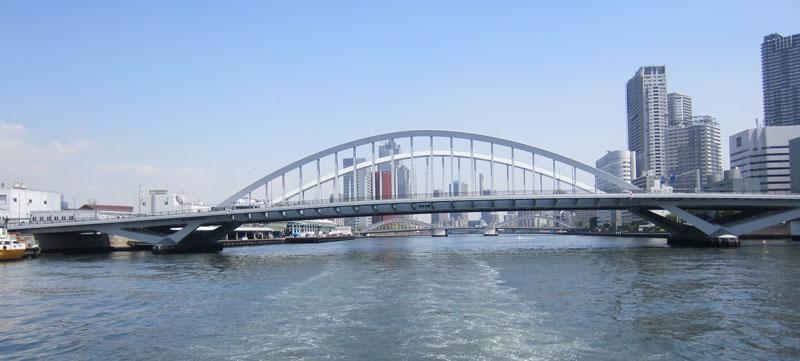
|
Tsukiji Ōhashi bridge (築地大橋, which translates into “Constructed land bridge”) spans the mouth of the Sumida river and connects Tsukiji and Toyosu.
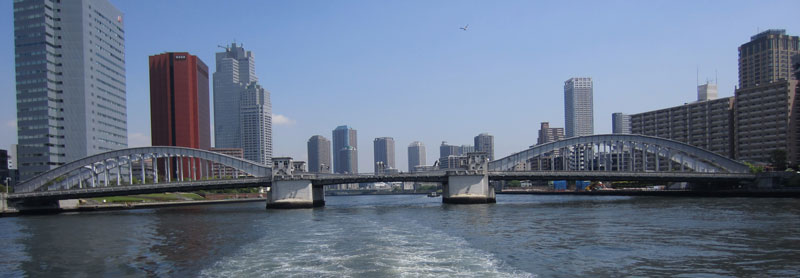
|
Kachidoki bridge (勝鬨橋, which translates into “Victory fight bridge”) dating from 1940 was constructed to commemorate the victory of the Japanese army during the Russian-Japanese War.
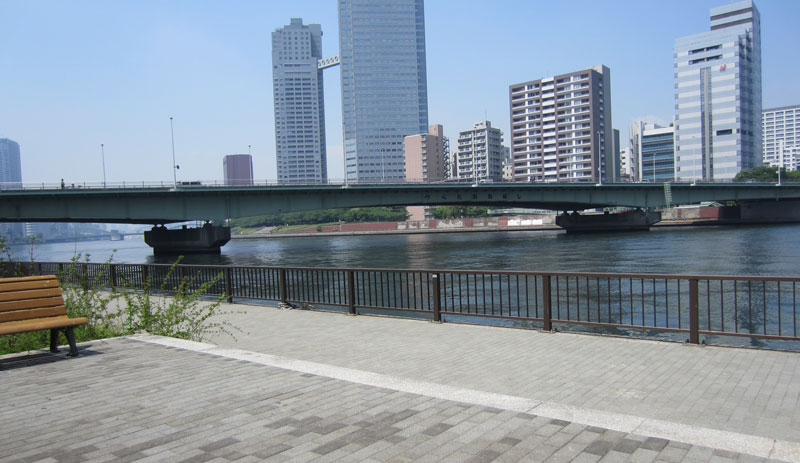
|
Tsukuda Ōhashi bridge (佃大橋, which translates into “Cultivated rice field bridge”) dating from 1964, was the first bridge built after World War II, crossing the river from Tsukiji to Tsukishima.

|
Chūō Ōhashi bridge (中央大橋, which translates into “Center bridge”) dating from 1994 is the most recently built of the bridges across the Sumida.
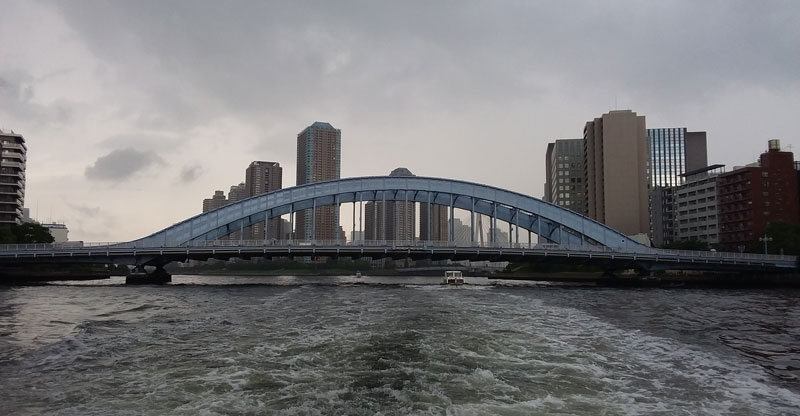
|
Eitai bridge (永代橋, which translates into “Perpetual bridge”) dates from 1924 and replaces a bridge built in 1696.

|
Kiyosuhashi bridge (清洲橋, which translates into something like “Clean island bridge”) was built in 1928 and links Kiyosu with Nihonbashi-Nakasu.

|
Shin Ōhashi bridge (新木橋, which translates into “New bridge”) dates from 1976 and replaced a bridge built in 1693.
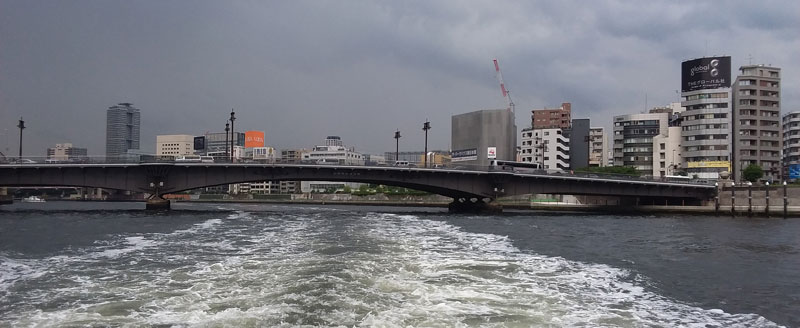
|
Ryōgoku bridge (両国橋, which translates into “Both provinces bridge”) is the oldest of the bridges that cross the Sumida river. It was finished in 1659 and was the first bridge to be built across the Sumida river after the great Mereiki fire in 1657 and was about 175 meters long. The current bridge dates from 1932, replacing the bridge built in 1659.

|
Just north of Ryōgoku bridge on the west bank is Yanagi bridge (柳橋, meaning “Willow bridge”). It crosses the mouth of the Kanda river where this flows into the Sumida river. The original wooden bridge was replaced with an iron bridge in 1895. This was replaced again in 1929 with the current iron bridge.
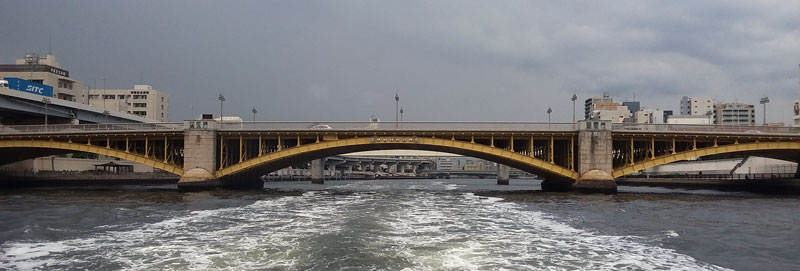
|
Kuramaebashi bridge (蔵前橋, which translates into something like “Former storehouse bridge”) was built in 1924. The name of the bridge refers to the rice granaries of the shōgun located in the Edo period on the west bank here.

|
Umaya hashi bridge (厩橋, which translates into “Stable bridge”) dates from 1929, and replaced a bridge built in 1875. The latter again replaced the Onmaya ferry bringing people across the Sumida in Edo times at this point. The name of the bridge refers to the fact that the shōgun once had horse stables on the west bank here.

|
Komagata hashi bridge (駒形橋, which literally translates into “Hall with statues in the form of a poney bridge”) dates from 1927 and takes its name from the Komagata temple dedicated to bodhisattva Kannon in the form of a horse head located on the west bank at the end of this bridge.
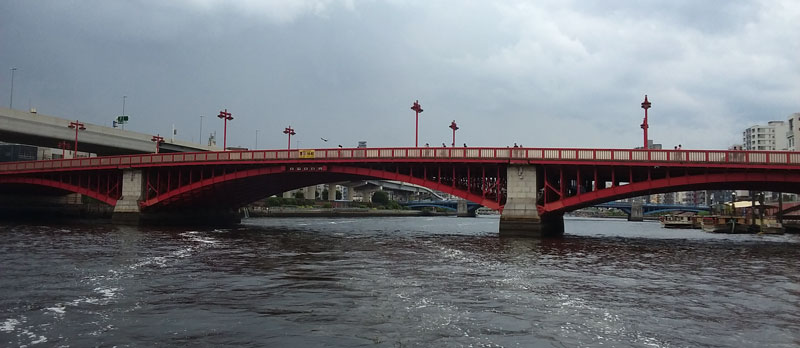
|
Azumabashi bridge (吾妻橋) dating from 1931 replaced the former Ōkawa bridge (大川橋, “Large river bridge”) which was first built in 1774.
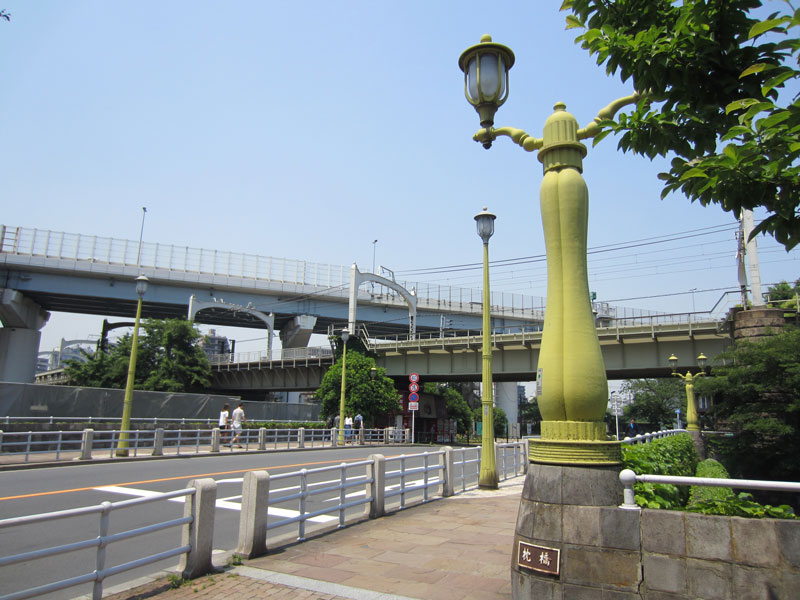
|
Just north of Azuma bridge on the east bank is Makura bridge (枕橋, which translates into “Pillow bridge”). It crosses the mouth of a water flowing into the Sumida river at this point.

|
Kototoibashi bridge (言問橋), dating from 1928, was reconstructed at the location of the bridge which linked two nearby temples. These are the Mimeguri shrine located on the east- and the Matsuchiyama Shōden shrine located on the westbank of the Sumida river, respectively.
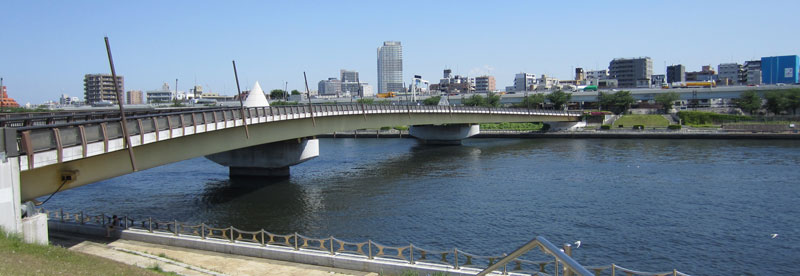
|
Sakurabashi (桜橋, which translates into “Cherry bridge”) is an X-shaped bridge dating from 1985 and is the only bridge crossing the Sumida river reserved for pedestrians (and cyclists) only.

|
Shirahigebashi bridge (白髭橋, which literally translates into “White beard bridge”) was completed in 1931, and is named after the Shirahige-jinja shrine located on the eastbank of the Sumida river just south of here.